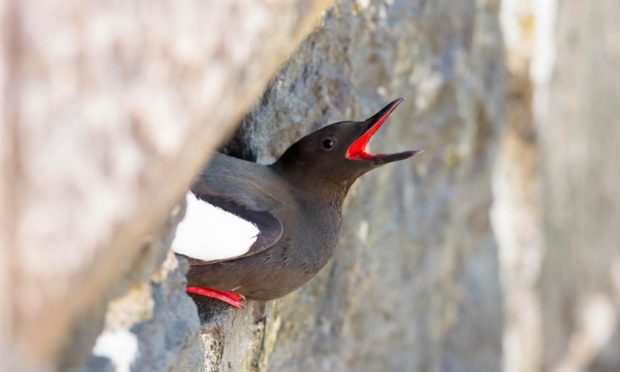Nature experts will undergo a rigorous cycle of Covid testing and periods of isolation on an island-hopping mission to carry out a seabird census.
The vital survey will start over the coming days when fieldworkers will be travelling to Argyll, where some of the important colonies are feared to be in serious trouble.
RSPB Scotland is carrying out the census, named Seabirds Count, which is the fourth of its kind to take place.
This latest project started in 2015, with many volunteers and surveyors taking part.
It was due to be completed last year but the last of the work had to be called off when the pandemic struck.
The scheme is now able to resume in a Covid-secure manner, and will take place from the end of March until July.
In Scotland a total of 13 fieldworkers have been employed to undertake surveys around the country along with locally-based staff and volunteers from the conservation organisation.
As part of efforts to prevent any spread of the virus, the visiting RSPB fieldworkers will be living and working together in pairs, staying in self-catering accommodation.
Safety precautions will include taking a Covid test before travelling to different areas, followed by a 10-day isolation period avoiding all other people when they first arrive.
The Argyll workers will be tested again prior to relocating to Mull to continue survey work there.
Dave Sexton, RSPB Scotland’s Mull officer, explained the risks some species of seabird face.
He said: “Some of our seabirds are in serious trouble and some breeding islands are at risk from invasive alien species like rats and mink which can decimate fragile breeding seabird colonies.
“This vital survey will help us understand how the Argyll colonies are faring, including the famous black guillemots or tysties in Oban Bay.”
The work follows on from Operation Seafarer in 1969-70, the Seabird Colony Register Census in 1985-88 and Seabird 2000.
Seabirds Count is led by the Joint Nature Conservation Committee and aims to make an accurate count of 25 species of seabirds – an estimated eight million birds when last counted at the turn of the century – across more than 10,000 sites in Britain and Ireland.
The survey data helps conservation scientists understand how seabird populations are changing over time.
Surveys will begin with black guillemots, also known as tysties, which are best counted during early mornings in late March and April when they perform group courtship displays on the sea next to breeding sites.
Later in the season, seabirds such as fulmars, shags, auks and gulls will be counted at sites not already surveyed for the census.
